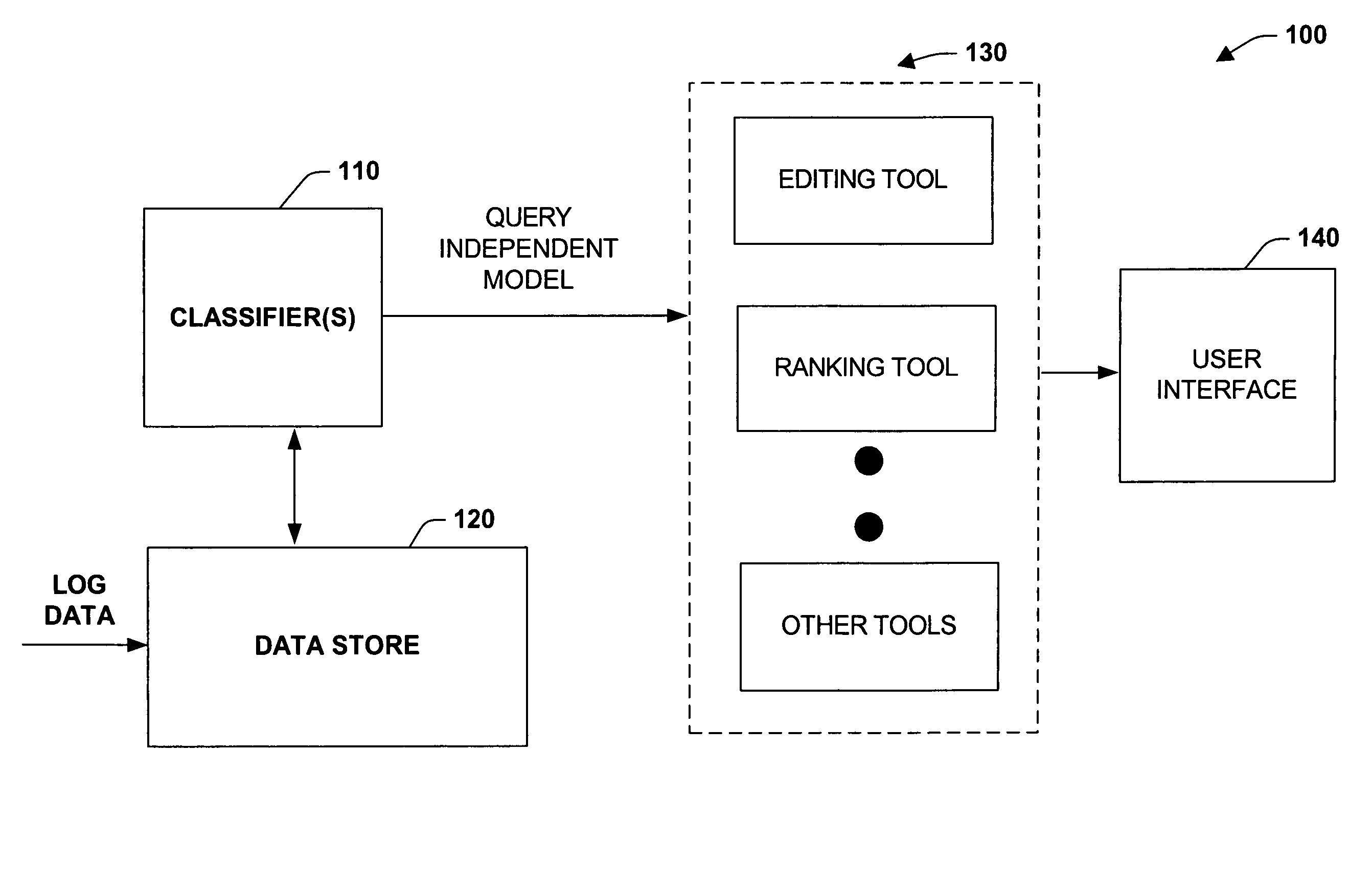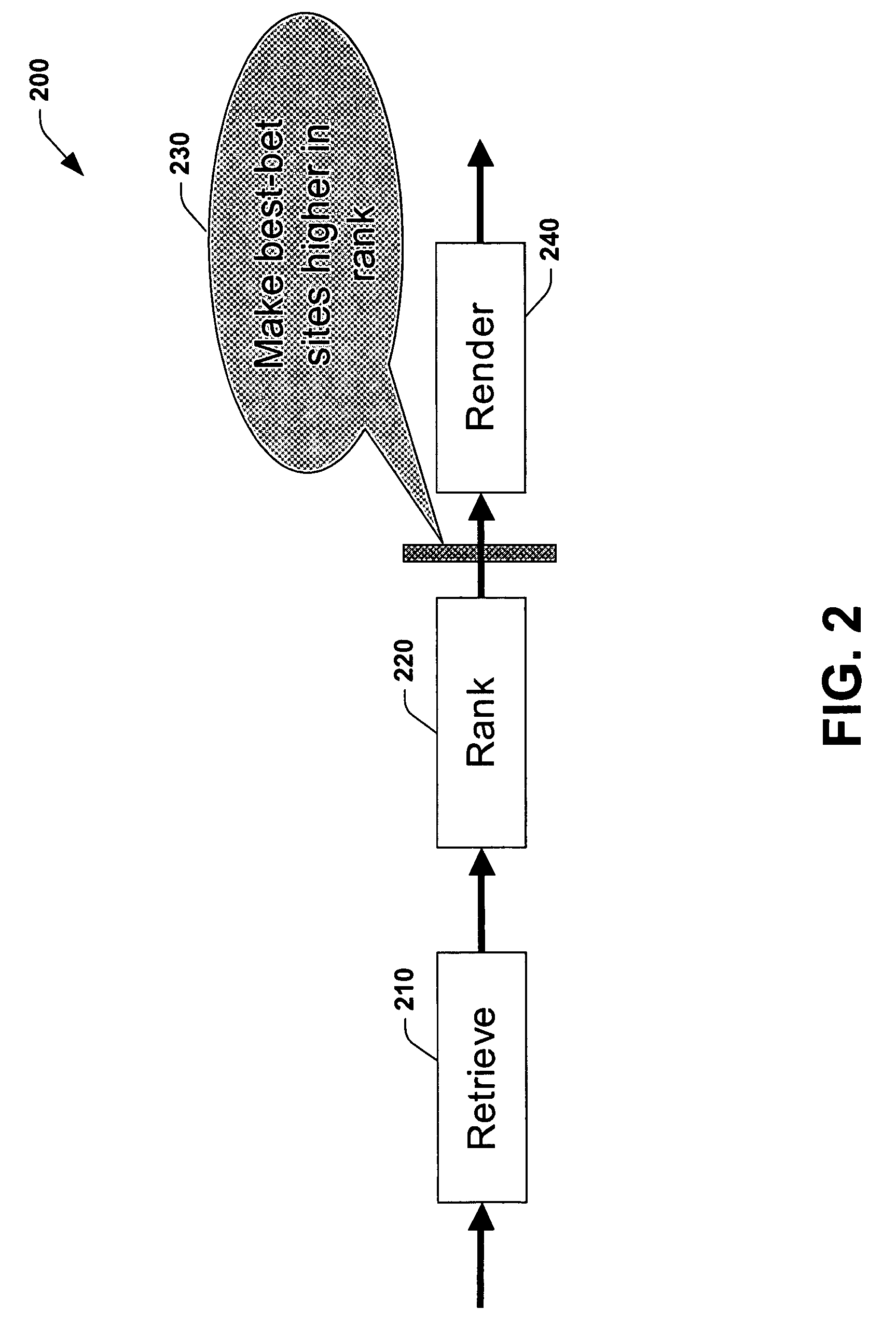Machine-learned approach to determining document relevance for search over large electronic collections of documents
a machine-learning and document relevance technology, applied in the field of computer systems, can solve the problems of inability to accurately determine the relevance of documents, time-consuming and time-consuming for both users and the system performing the search, and sacrifice time and system processing, so as to maximize the likelihood of displaying
- Summary
- Abstract
- Description
- Claims
- Application Information
AI Technical Summary
Benefits of technology
Problems solved by technology
Method used
Image
Examples
Embodiment Construction
[0020]The present invention relates to a system and methodology that applies automated learning procedures for determining document relevance and assisting information retrieval activities. In one aspect, a system is provided that facilitates a machine-learned approach to determine document relevance. The system includes a storage component that receives a set of human selected items and / or machine selected items to be employed as positive test cases. A training component trains at least one classifier with the human selected items (or machine selected items) as positive test cases and one or more other items as negative test cases in order to provide a query-independent model, wherein the other items can be selected by a statistical search, for example. Also, the trained classifier can be employed to aid an individual in selecting new positive cases or utilized to filter a statistical-based search. Outputs of the filter can be ranked such that positive cases are ranked before negat...
PUM
 Login to View More
Login to View More Abstract
Description
Claims
Application Information
 Login to View More
Login to View More - R&D
- Intellectual Property
- Life Sciences
- Materials
- Tech Scout
- Unparalleled Data Quality
- Higher Quality Content
- 60% Fewer Hallucinations
Browse by: Latest US Patents, China's latest patents, Technical Efficacy Thesaurus, Application Domain, Technology Topic, Popular Technical Reports.
© 2025 PatSnap. All rights reserved.Legal|Privacy policy|Modern Slavery Act Transparency Statement|Sitemap|About US| Contact US: help@patsnap.com



